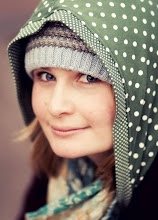You could see it in their eyes. This fierce vitality, passion and exuberance to be alive. Not the aloof and inanimate detachment I have become so accustomed to, as people walk by with their iPhones, alternating between shutting out the bustle of Boston for a quick conversation with someone somewhere far away, bumping to music that nobody can hear, or checking Facebook every ten minutes. From the slums to the cities nestled in the sides of the Himalayan foothills, to my very campus at the University of Hyderabad, the people of India are truly alive. The streets are deafening with the honking of melodic horns from vibrantly painted trucks and the shouts of street vendors mingling with Bollywood hits, and the bright, intricate designs of sarees and salwar kameez sprinkle even the dingiest streets with color. It is vibrancy like I’ve never seen.
Studying and living in India changed me. It came at a time when I was unsure of what I was doing, and I was afraid. Afraid to fail, afraid to commit, afraid to let go. I chose India because I needed something different from anything I’ve ever known. I also needed to escape from the reality of my own life in order to gain true perspective. Frightened but determined after the Mumbai attacks, just weeks before I was scheduled to leave, I pushed myself onto that plane in order to test my own limits in a place where I would have to battle my way through daunting encounter after daunting encounter.
It began in baby steps, immersing one toe at a time into the vast depths of another culture. First came the stares. Those curious, lively eyes fixed on me, inquiring, “You are from which country, madam? Can I take your picture?” (Some had never seen such a fair complexion like mine before.) Then came the rupees. I very quickly learned that approximately 160rs (~$3) could sufficiently fund a 14-hour train ride across the country, one share of a gloriously sketchy hotel room for three, or a 40 oz. of the Budweiser of India: Kingfisher beer (which has the thrilling tendency to spontaneously burst). Finally came the learning curve of bargaining tactics, which is an art in itself. With the autorickshaw drivers, I mastered the “bahut mahanga hain! (too expensive!) and pretend to walk to another driver” technique.
From there it all seems like a messy, colorful, exciting dream -- wandering around the sprawling campus with 8 stray dogs on my heels, discovering the hot spots of Hyderabad experimenting with various terrifying methods of transportation (the autorickshaw, the local bus, the railway, or my favorite, the back of a stranger’s motorbike). I began learning the beautiful Hindi language, (“Aap kaise hain?” (How are you?)) sampling the different curries and koftas and cardamom-filled delicacies with my ever-eager fingers, and surviving the resultant explosive diarrhea in the Eastern-style toilets. Every day was a new adventure with different discoveries, realizations, and learning. For instance, there are no lines in India, and maps don’t work. And personal space is going to cost you. India is a country of contrasts, with massive gaps between the upper- and lower-caste living conditions and traditions. Although caste-discrimination has been outlawed, caste continues to play a major role in the lives of the Indian people. I experienced a major caste-related protest on campus, causing the cancellation of classes, and the sealing of the gates by angry students. Where the country pushes forward in its scientific advances, there are major infrastructural holes holding back its progress. The roads are terrible, and the common method of trash disposal usually involves lighting the pile of trash (or the mystery snack of a wandering cow) on fire. In Hyderabad especially, the technical hub of the country, it was common to see state-of-the-art computer engineering high rises next to a quarter-acre of slums with no running water, or a multiple amputee begging outside of a shopping mall with an IMAX theater.
From sunrise at the very tip of India at the holy point where Gandhi’s ashes were cast into the sea, to the calm backwaters in Kerala, to riding camels in the Great Indian Desert, just 40 miles from the Pakistan border, to rafting down the holy Ganges where the Beatles made their visit in Rishikesh, I experienced as much of the beautiful culture and environment as I possibly could. The diversity and differences across the country rival those differences between New Englanders and deep Southerners, New York City and the Rocky Mountains. With every adventure I became more confident, less afraid of the unknown, unfamiliar challenges and learned that you must discover your own voice in order to be heard. At the end of every trip, it was wonderful to come home to Hyderabad, to my Indian friends in the art studio, to my tabla guru’s smile, and the home-cooked dishes in the hostel, ready to ride my rickety bike the two miles in 106-degree heat past the manic monkeys to Monday’s morning classes.
It is extremely difficult to sum up or explain the montage of beauty, heartbreak, and unforgettable experience living in a place like India. And for all of its magnificence and mystique, India definitely has its darker side. The politicians bribe lower caste voters with color TVs and alcohol, and the Hindu-Muslim tension rears its ugly head at intervals. But the emphasis on love, mindfulness, and passion for life overpowers those negative aspects at every turn. In India I was able to accomplish more than I thought I was capable of, and the empowerment that comes along with independent travel is unparalleled. There finally came a point where I felt right, as the time was nearing coming home. Like I was centered, ready and able to do anything. And now, I am trying to apply and sustain all of that change to my life back in Boston. That is the difficult part. So I am doing everything I can to go back.

No comments:
Post a Comment